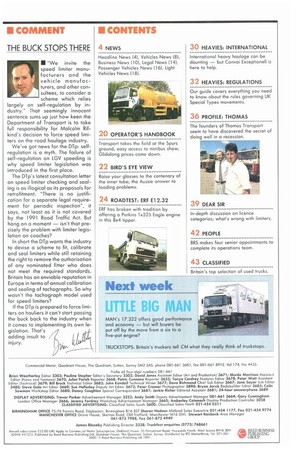THE BUCK STOPS THERE
Page 3

If you've noticed an error in this article please click here to report it so we can fix it.
• "We invite the speed limiter manufacturers and the vehicle manufacturers, and other consultees, to consider a scheme which relies largely on self-regulation by industry." That seemingly innocent sentence sums up just how keen the Department of Transport is to take full responsibility for Malcolm Rifkind's decision to force speed limiters on the road haulage industry.
We've got news for the Dip: selfregulation is a myth. The failure of self-regulation on LGV speeding is why speed limiter legislation was introduced in the first place.
The DTp's latest consultation letter on speed limiter checking and sealing is as illogical as its proposals for retrofitment. "There is no justification for a separate legal requirement for periodic inspection", it says, not least as it is not covered by the 1991 Road Traffic Act. But hang on a moment — isn't that precisely the problem with limiter legislation on coaches?
In short the Dip wants the industry to devise a scheme to fit, calibrate and seal limiters while still retaining the right to remove the authorisation of any nominated fitter who does not meet the required standards. Britain has an enviable reputation in Europe in terms of annual calibration and sealing of tachographs. So why wasn't the tachograph model used for speed limiters?
If the Dip is prepared to force limiters on hauliers it can't start passing the buck back to the industry when it comes to implementing its own legislation. That's adding insult to injury.




















































































































